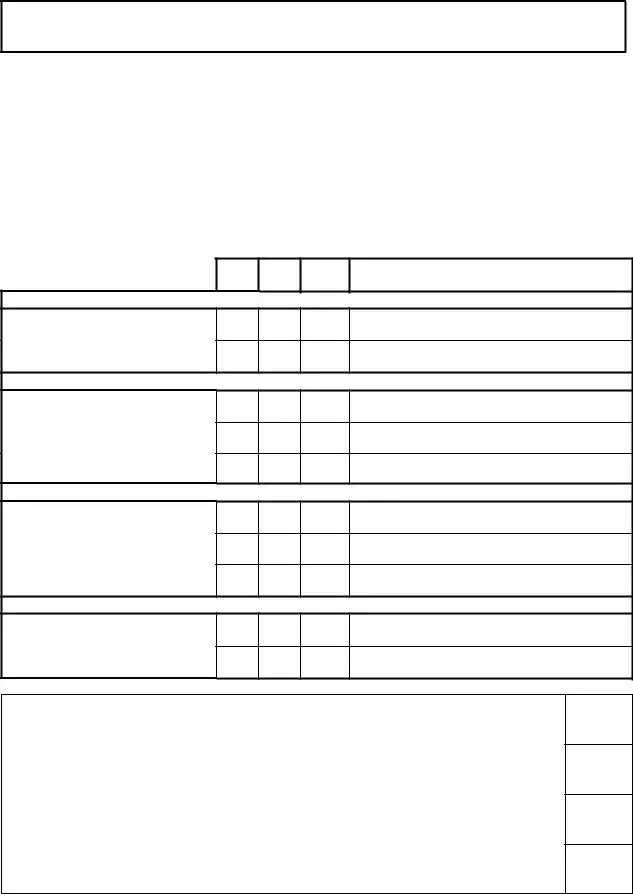Are you considering occupational therapy for your patient? If so, it's important to be sure that the referral is handled properly. To ensure that communication between referring parties and the occupational therapist is clear and concise, a comprehensive checklist form should be completed. This post will provide an overview of what’s included in a typical Occupational Therapy Referral Checklist Form, as well as some tips on how best to fill one out. With this simple step-by-step guide, you can have confidence that all necessary information related to the referral process has been correctly documented. Read on for more details!
| Question | Answer |
|---|---|
| Form Name | Occupational Therapy Referral Checklist Form |
| Form Length | 2 pages |
| Fillable? | No |
| Fillable fields | 0 |
| Avg. time to fill out | 30 sec |
| Other names | Physical Therapy Referral Checklist Form, Occupational Therapy Referral Priority Checklist Form |

Occupational Therapy
Priority Checklist Guidelines
This form has been designed for occupational therapists to complete in discussion with someone who is already working with the client being referred
It is not intended to remove the need for a more
As such, the language of the form has been carefully chosen so that the items consist of commonly understood terms reflecting the focus of traditional occupational therapy. These are organised into four sections that correspond with themes from the Model of Human Occupation: volition, habituation, performance and environment. The occupational therapists’ knowledge of these items will assist them to make more detailed enquiries as to their clients’ precise needs
VOLITION
Confidence |
‘Personal causation’: appraisal of ability, expectation of success, |
|
realism, understanding of strengths and limitations, sense of control |
||
|
||
Interest |
enjoyment, satisfaction, curiosity, participation, choices, goals, |
|
preferences, sense of purpose, commitment |
||
|
||
HABITUATION |
|
independence, activities of daily living |
||
|
|
|
Productivity |
responsibilities, roles, routines |
|
(domestic/work/education) |
||
|
||
Leisure |
balance, structure, variety, occupational demands |
|
|
|
|
PERFORMANCE |
|
|
Interpersonal skills |
‘Communication and Interaction skills’: |
|
|
||
Cognitive ability |
‘Process skills’: |
|
knowledge, planning, organisation, |
||
|
||
Physical ability |
‘Motor skills’: |
|
posture, mobility, |
||
|
||
ENVIRONMENT |
|
|
Physical environment |
facilities, opportunities, privacy, accessibility, stimulation, comfort, |
|
(home/work/place of study) |
finance, aids and equipment, possessions, transport, safety |
|
Social support |
family dynamics, friends, neighbours, peers, work colleagues, |
|
expectations and involvement |
||
|
Having identified the possible needs of the client, the occupational therapist is required to make a professional judgement regarding the need for occupational therapy intervention. This is not necessarily based on the number of ticks in the ‘Yes column’, but on the perceived urgency/severity of need that is most likely to be apparent in the comments section of the form

Occupational Therapy Referral
Priority Checklist
Name of client: |
|
Name of worker with whom referral has been |
|
|
…………………………………… |
discussed: |
………………………………………… |
|
|
||
Date of birth: |
____/ ____/ ____ |
Designation: ……………………………………….. |
|
Identity number: …………………………………… |
Date: |
____ / ____ / ____ |
|
Is there any indication that occupational therapy would be useful to help explore or support the following areas of functioning?
Yes No
Don’t know
Comments
MOTIVATION
Confidence
Interest
ROUTINE
Productivity (domestic/work/education)
Leisure
PERFORMANCE SKILLS
Interpersonal skills
Cognitive ability
Physical ability
ENVIRONMENT
Physical environment (home/work/place of study)
Social support
IDENTIFIED NEED FOR OCCUPATIONAL THERAPY
No clear need for OT – no occupational needs identified
Need for minimal intervention/further assessment/consultative OT services to support wellness and/or prevent dysfunction.
Need for OT intervention to restore/improve function
Need for extensive OT intervention to improve function. Referral to
Occupational Therapist: …………………………….. |
Signature: ………………………………………….. |
©2004 Derbyshire Mental Health Services NHS Trust, U.K. / S. Cratchley, S. Parkinson, S. Town, S. Watling, with thanks to A. Lucas & K. Wilshere